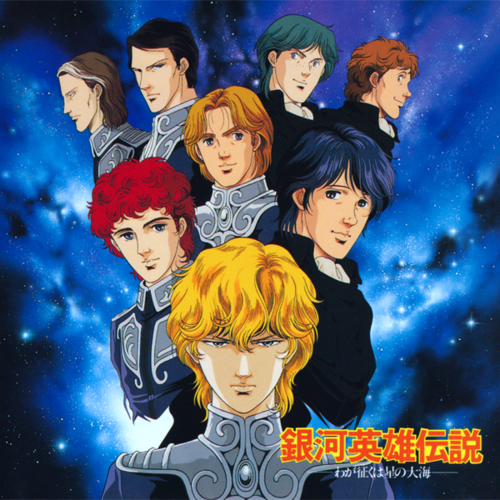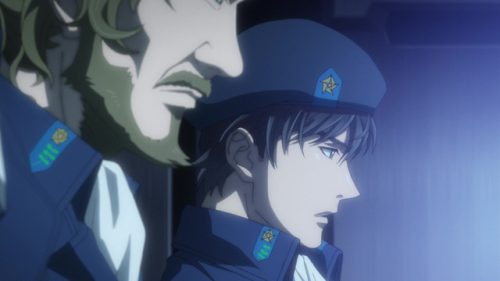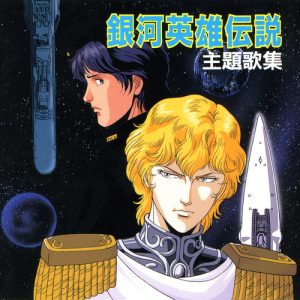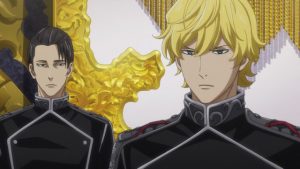
The original Legend of the Galactic Heroes series is considered the longest OVA in history. For the longest time, it eluded Western releases and it didn’t get an official release in North America until 2015! Then three years later, Production IG released a 12-episode remake called Die Neue These, meaning The New Thesis in German. So, for this edition to Then Vs. Now, we’d like to compare what is covered in Die Neue These to the original series.
Story
The main story that centers between the 150 year war between The Free Planets Alliance and The Galactic Empire is pretty much the same as well as the main cast. The first few episodes tell how Yang and Reinhard first become rivals, but the execution to Yang’s introduction differs in both versions. In the first episode to the 1988 OVA series, Yang is generally introduced and we see him as a first officer whose advice is discarded only to be proven right as the conflict progresses. In Die Niue These, he’s introduced at the end of episode 1 via voice when he makes his public broadcast to initiate a plan that means nothing to the Empire, but turns the tide.
Episode 2 of Die Niue These uses a flashback from the point of view of the Alliance to provide the circumstances that leads to the ending of the previous episode. What makes these introductions different is how the 1988 series emphasizes more on his casual and laid back nature, while the newer version emphasizes more on him being an unorthodox genius at tactics. Either way, both anime portray Yang’s leadership abilities, and how he becomes a respected rival to Reinhard. Some of the events are changed in terms of pace and placement but they get the job done.
The third episode of Die Niue These also gives a brief history to the Galactic Empire but is only regulated to just five minutes while there are two episode in the latter half of the original series that fully dedicate to giving not only the history of the Empire, but to the rise of the Alliance as well. Other than that, a good portion of what is shown in Die Niue These is also present in the original such as the backstory to how Reinhard and Kircheis first meet, and how the Alliance takes over Iserlohn. As for the rest of the cast, the nature of most of who is presented have little to no differences.
Character Designs
Most of the designs are largely faithful to the original series for fans to easily recognize but are given more of a Bishounen edge, most especially with Reinhard and Kircheis. Even some of the older characters are designed in such a way as well. With some cast members some changes are small, and there are those that are significant from the original counterpart. One significant change is with Walter von Schönkopf. In the original series, he convincingly looks like he’s in his mid-30s while in the newer version, you’d probably ask for his ID if he wanted to buy cigarettes, alcohol, or a dirty magazine behind the register.
As for the other noticeable but minor changes, Reuenthal, despite his short appearance in Die Niue These, is still instantly recognizable by having one brown eye and one blue eye, but his hair in this version is notably longer to further make him look like a Bishounen. Oberstein still maintains his pale complexity and his constant stoic expression, but has much shorter. Other than that, the uniforms to both the Alliance and the Empire are more or less the same as the original, but with some minor changes to reflect modern fashion.
Portrayal of Technology
If there is one thing that Die Niue These gets right, it is definitely the portrayal of how technology some 30 centuries into the future should be done. The computers in the older anime might as well be Commodores and whenever you see a simulation of a battle on a screen in an Admiral’s office, you might as well be playing an Atari 2600 game. Plus, data is still stored on floppy disks or CDs! Thanks to technological advances in reality between the releases of both versions, Die Niue These presents future tech in a way that was meant to be, with holograms, touchscreens, and the whole shebang.
Music
The music to Die Niue These gets the job done in setting its respective tone, however, the original series wins by an overwhelming unanimous decision in terms of soundtrack. Thanks to classic music being in the public domain (or so we assume), much of the 1988 soundtrack uses classics such as Beethoven’s Symphony No. 9 (though largely popularized in Nodame Cantabile). In addition to using Beethoven’s masterpieces, other famous composers included are Bach and Mahler, whose songs excellently capture the Germanic influences of this series.
Final Thoughts (Voice acting)

Lastly, if there is one quality that the original series has over Die Niue These, it is without a doubt, the voice cast of the Japanese version. We will admit that Mamoru Miyano as Reinhard in the newer version was excellent, but he’s still has a ways to go. In the original Japanese version, he’s played by Ryo Horikawa, the voice of Vegeta from DBZ and you get to see how multi-talented he is. As Vegeta, he’s rough and always on edge, but as Reinhard, he captures all of his dimensions of being a charismatic leader who only relies on a small group of people, and despite his rough exterior, he’s really for the little guy. As for Yang’s original seiyuu, he’s played by the legendary Kei Tomiyama, who is considered the Mel Blanc of Japan. Plus, the rest of the cast in the 1988 version is swarmed with legends.
Considering how certain qualities balance each other out between both versions, we strongly recommend you watch them side by side.
Recommended Post
[Anime Rewind] Ginga Eiyuu Densetsu (Legend of Galactic Heroes)
Recommended Post





